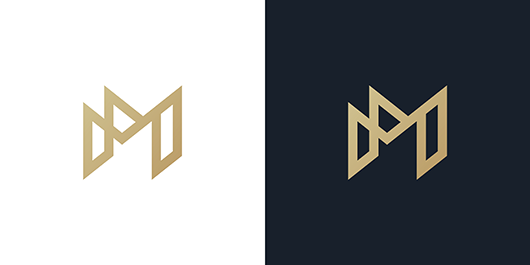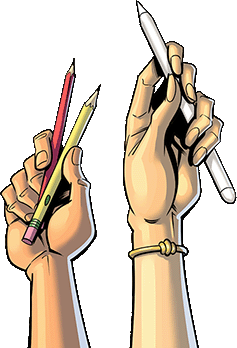How to Choose the Right Color for Your Logo and Brand Identity
April 3, 2021
Color psychology transcends borders, nationalities, and age groups. When you’re creating a brand and choosing your logo, you have to figure out your marketing angle and which color palettes best represent your company.
When searching for your brand identity, think about the values that are important to your business. Once you understand what attributes your company wants to promote, you can select colors that communicate those ideals.
Why Choosing the Right Logo Colors Matters
Choosing the right color combination for your logo isn’t just about designing an aesthetically pleasing image; it’s also about engaging a customer base and making your brand stand out.
Emotional Response
People have strong emotional responses to colors - blue, red, yellow, and green evoke psychological reactions. The effect that colors have on a person’s psyche is a combination of cultural imprinting, personal associations with color, and biology.
Bright colors like red and yellow stimulate the mind, while cooler colors like blue are soothing. By making thoughtful choices about what colors you use, you can influence the way people think when they look at your logo.
Differentiation
Across borders and over oceans, people from all over the world experience similar reactions to specific colors. Remember that even different tones of the same color can elicit unique feelings, so the shade you’re working with matters.
Color is an easy marketing tool for getting your customers’ attention, but you need to use it artfully not to overwhelm the viewer’s mind. Splashing bright colors all over something makes it hard to miss, but you must ensure you’re still selecting hues that complement each other and don’t clash.
Try placing a vibrant color on a muted background for maximum effect. Advertisers have been using this technique for years to make their products and brands stand out from the crowd.
Customer Engagement
Your brain automatically digests visual elements, especially color, faster than it does text. Science shows that using color can boost brand recognition and influence clients’ purchasing decisions by 80%.
By using color to define your brand rather than a slogan, you’ll become an instantly recognizable force in the marketing world.
Basics of Color Theory
Understanding the color wheel is a quick and effective way to boost your brand’s memorability. The roots of color theory go back to pre-language days. The emotional responses from specific colors may have been a way for your ancestors to stay safe.
Blood red puts people on high alert as it evokes memories of a dangerous situation. Here are some more distinctions between colors, hues, and the psychological response they create in humans.
Warm vs. Cool
Warmer hues are colors like orange, yellow, and red. Cooler tones range from sea-green to deep purples.
Warm tones like yellow tend to signify alerts like barricades or traffic tape. Red hues can make someone hungry, so they’re often used in restaurant logos. Cooler colors are calming, but they can also seem sad or melancholy.
Many brands use purple because it’s a great mix of exciting red and toned-down blue. Green often conveys an eco-conscious vibe since many environmental companies use it as part of their brand identity.
Happy vs. Sad
Certain tones cause people to experience a sad emotional response. Sadness is an intense emotion, and feeling this in reaction to your logo isn’t necessarily bad as a strong bond will come out of it.
The colors most associated with sadness are dark blues, blacks, grays, and other muted tones. Neutrals can take on a sad undertone, whereas cheerful colors tend to be brighter.
Pastels and bold color choices often convey an upbeat and vibrant demeanor. A mix of these two types of colors adds balance to your brand identity.
Neutral Hues
These subtle shades often provide an excellent backdrop to more vibrant hues and are perfect complementary colors to brighter tones like coral or mariner blue.
If you have a lot going on in your logo, like image design elements or lots of text, you may want to use a neutral color as the basis for your color scheme, so your logo doesn’t become a sensory overload.
Defining Your Brand Identity
To choose your brand colors, you need to define some of your brand’s characteristics and see how you can incorporate various hues to represent those personality traits.
Here are some qualities that you can consider while defining your brand personality. Are you a serious or playful company? Are you targeting mature or youthful audiences? Does your brand have a more subdued tone, or is it lively and loud?
The answers to these questions help guide you in choosing the colors for your logo that align with your values.
Meanings of Common Colors and Combinations
Although there are cultural inconsistencies, such as red being a color of luck in some countries and danger in another, for the most part, humans agree on a few impressions of each color on the wheel.
- Red – Fire, danger, fiery passions, and strong appetites are represented within the range of red colors. Some famous brands that use red in their logos are Target, Netflix, and McDonald’s.
- Green – When you use green in your logo, you’re often communicating that you run a green, eco-consciousness company. If your brand is not associated with anything environmental, green can mean growth, harmony, or luck. Brands using green include Starbucks Coffee, John Deere, and Whole Foods Market.
- Blue – One of the most calming hues on the color wheel, blue can range from deep midnight to the vibrant cornflower of a summer sky. It’s also frequently associated with corporations and technology. Popular brands making use of blue in their logos include Facebook, Dell, and Skype.
- Yellow – This sunny shade spurts optimism, hope, and positivity. It also has cautionary notes and is sometimes used in warning signs or symbols. A vibrant yellow hue indicates low costs and lots of fun. Notable brands capitalizing on yellow in their logos are Best Buy and Cheerios.
- Purple – The shade of purple is an exciting blend of fiery red and calming deep blue. It exudes royalty and creativity. Purple is commonly seen in big brand logos like Cadbury and Hallmark.
- Orange – Often associated with creativity, youth, and spontaneity, orange is a secondary color that emits the warmth of red without its intensity. Some notable orange logos are Nickelodeon, Etsy, and Fanta.
- Pink – Peachy and pink tones were often associated with femininity in the past, but pink has been reclaimed as an ungendered color in recent years. There is a diverse range of pink, from the exceptional hot pink magentas to the light peaches of a summer sunset. Brands using pink in their logos with success include Victoria’s Secret, Airbnb, Lyft, and Pepto Bismol.
- Brown – Brown is an underrated logo color that can be successful if used in the proper context. Brown is a great accent color for luxury brand logos or an excellent choice for the main color in an environmental logo. Many chocolate manufacturers have chosen brown for their logo, like Hershey’s and M&M’s.

Fading to Black
Choosing the right colors for a logo design is a skill that the success of your brand hinges on. Consider the essential qualities of your company and match these traits to the corresponding hue.
If you have printing needs for your company and would like to see what your new logo looks like in living color, contact our professional printing team at Comix Well Spring. We’ll guide you every step of the way with our expertise and attentive customer service.


